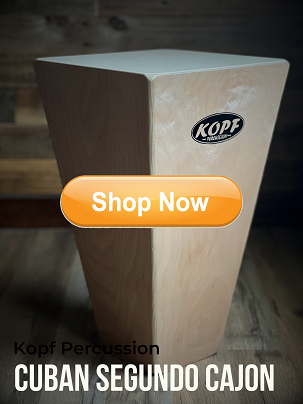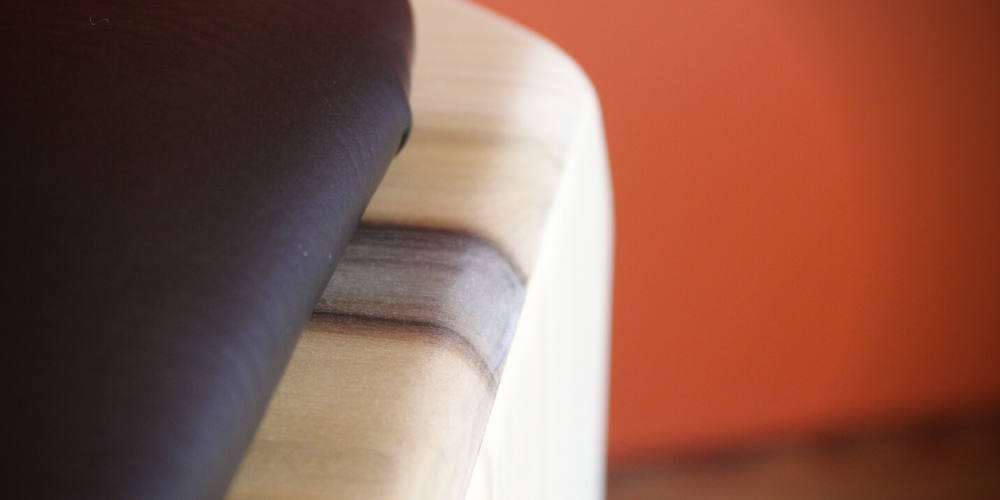Posted by Stephen Head on 19th Jun 2022
The Beauty of Wabi Sabi and It's Influence on My Work
The cajons that I build have a certain "flavor" about them. I am striving for a particular set of qualities when I am working in my shop. Each drum that I build must be of the highest quality , function at the highest level, be naturally beautiful both aesthetically and tonally, have as simple a design as possible, and acknowledge the beauty of natural imperfection. I will try to explain.
I have been woodworking for over 40 years and have been handcrafting percussion instruments for over 13 years. Thinking back, I have always had a particular style that I worked in. I may not have known what to call it, but it has always been there. Many people would call it "Rustic", but that isn't really the right term. A few years ago I came across the Japanese term "Wabi Sabi". It is a philosophy that is ingrained in Japanese life. It affects everything in the Japanese culture. After studying this philosophy, I realized that I had been following it all my life. In her book "Wabi Sabi", Beth Kempton states that, "Wabi sabi is an acceptance and appreciation of the impermanent, imperfect, and incomplete nature of everything."

Highest Quality Possible
Maintaining the highest quality possible is of the upmost importance to me. It is so ingrained in my work that it has become part of me. I strive to achieve the highest quality in every aspect of my work whether that be in the selection of raw materials, the design process, in the mill shop, applying finishes, packaging or customer service after the sale. Wabi Sabi says that quality is actually a practice that is improved upon continuously. You can never achieve perfection in quality so you must always strive to improve it. Quality, like nature itself, is a work in progress that is always changing.
Function at the Highest Level Possible
I believe that a drum must do what a drum must do. To me, there is nothing worse than sitting down with a musical instrument, begin playing, and it doesn't do what it was supposed to do. It doesn't matter to me how visually beautiful a drum is if it doesn't sound good. My drums MUST sound AWESOME! Specific drums are designed to sound a specific way. Some drums are designed to have a very punchy bass tone while others should have a very long and resonant bass tone. Each instrument should do exactly what it is designed to do.
Naturally Beautiful As Possible both Aesthetically and Tonally
I believe in letting the wood do the talking. Wabi sabi is all about nature. What is the point of using beautiful natural materials and then covering them up with something unnatural. I'd never use paint. I don't use stain. I apply clear finishes that let the beauty of the grain in the tone woods show through. Tone comes from the wood. My designs allow the tone of the wood to shine through. Nature is beautiful and I strive to work with her rather than against her. A famous Japanese Woodworker saying is "You can work with nature, or you can work against nature. You have to choose one or the other." I think nature knows what she is doing so I choose to be on her side.
Design as Simple As Possible
I prefer to design my drums to be as simple as possible and still achieve the high quality standards and characteristics that I'm looking for. I definitely adhere to the idea of function over form. It doesn't matter to me if something has a complex and fancy design if the same thing can be achieved with a simple and direct design. Most times, the simple solution is the best solution.
Beauty in Nature's Imperfections
One of the most basic principles of Wabi Sabi is the acknowledgment that nature is imperfect and that it's imperfections are beautiful. I incorporate this idea into my work. When I come across a piece of wood that has some imperfection in the grain, I will showcase it. I believe that it gives each drum it's own unique character and charm.

Wabi Sabi is actually woven into every aspect of my life. I live as simple and as close to nature as I can and that naturally spills over into my work as an instrument builder. If you would like to learn more about Wabi Sabi you can read Beth Kempton's book Wabi Sabi.
As an Amazon Associate, I earn from qualifying purchases. This means that if you click on the link and make a purchase, I may receive a small commission at no extra cost to you. This helps support my work in providing quality content. Thank you for your support!
I would love to connect with you on social media if we haven't already. Just follow the links below.
You can also share this post by clicking below
Check out my blog post


